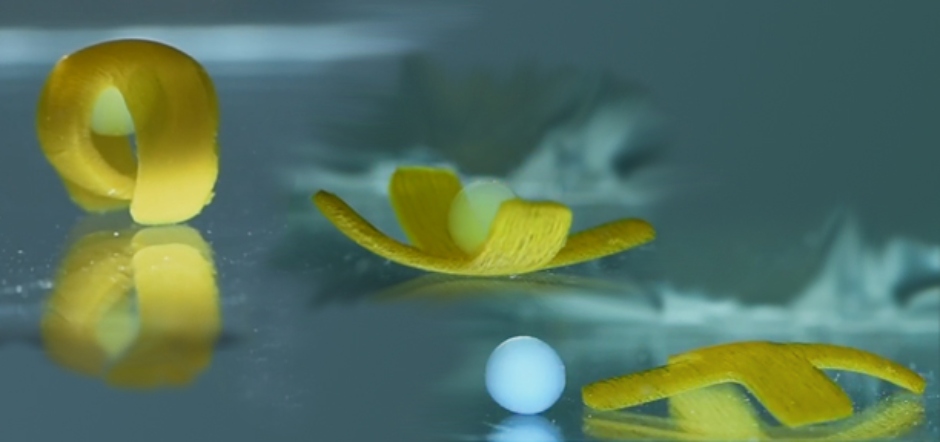Nearly 90 per cent water by weight and activated by light, the team confirmed the robot can pick up and transport cargo, climb hills and release a particle by ‘break-dancing’. Described as resembling a four-legged octopus, the centimetre-sized robot moves ‘without complex hardware’ and walks in the direction of an external rotating magnetic field.
According to researchers, the robot is ideal for use in aquatic environments and functions inside a water-filled tank. It is hoped that the robots could be used to recognise and actively remove unwanted particles in specific environments, and to precisely deliver bio-therapeutics or cells to specific tissues.
“Conventional robots are typically heavy machines with lots of hardware and electronics that are unable to interact safely with soft structures, including humans,” said Samuel I. Stupp, professor of Materials Science and Engineering, Chemistry, Medicine and Biomedical Engineering at Northwestern. “We have designed soft materials with molecular intelligence to enable them to behave like robots of any size and perform useful functions in tiny spaces, underwater or underground.”
Cheetahs inspire LEAP in development of soft robotics
Opteran secures £2.1m to 'solve autonomy' in robotics
Olvera de la Cruz, deputy director of Northwestern’s Center for Bio-Inspired Energy Science, led the project’s theoretical work and described how the team can program specific sequences of magnetic fields to remotely operate the robot, directing it to follow paths on flat or inclined surfaces as well as through narrow passages with complex routes.
The study, authored by postdoctoral fellow Chuang Li and graduate students Garrett Lau and Hang Yuan, was published in the journal Science Robotics. It builds on Stupp’s previous work to design ‘robotic soft matter’ imitating living sea creatures. A previous study, published earlier this year, explained how the robotic material could bend over time scales of minutes and crawl on a surface by taking one step every 12 hours.
Stupp’s recent breakthrough reportedly allows the soft robot to walk at about one step per second as well as being able to ‘roll’ to its destination in order to deliver cargo, which it drops at the new location by inverting its shape or performing the spinning ‘break-dance’ motion.

Precise movement and agility were achieved through the robot’s water-filled structure and the embedded skeleton of aligned nickel filaments that are ferromagnetic, the team said. When exposed to light, the robot’s molecules are said to become hydrophobic, causing water molecules to escape. This causes the robot to ‘come alive’, enabling it to respond rapidly to rotating magnetic fields.
Future applications for the robots could include creating objects for chemical production, new tools for environmental technologies or as smart biomaterials for advanced medicine.
Stupp said the team would eventually like to make ‘armies of microrobots’ to perform complicated tasks in a coordinated way. “We can tweak them molecularly to interact with one another to imitate swarming of birds and bacteria in nature or schools of fish in the ocean. The molecular versatility of the platform could lead to applications that have not been conceived at this point,” he added.




Project to investigate hybrid approach to titanium manufacturing
What is this a hybrid of? Superplastic forming tends to be performed slowly as otherwise the behaviour is the hot creep that typifies hot...